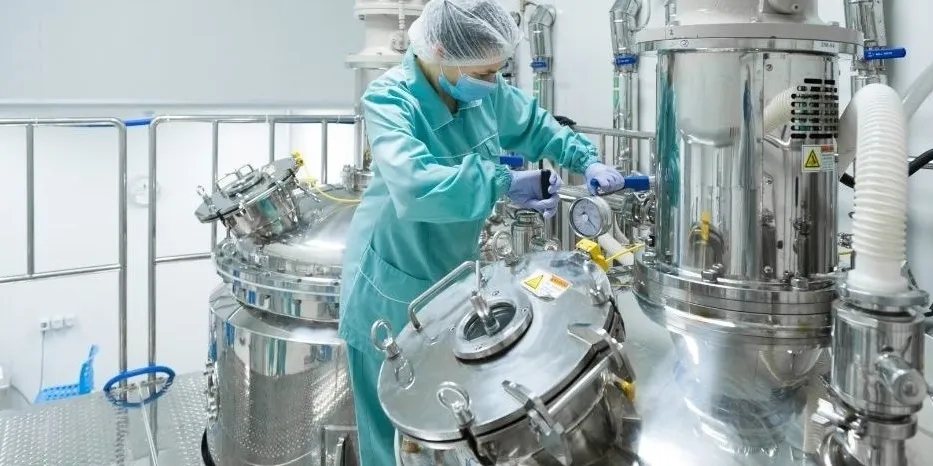Intelligent pH Sensors: Revolutionising Chemical Analysis
⬅ Back to Posts
In the realm of chemical analysis, the measurement of pH is fundamental. pH sensors are indispensable tools used in various fields, from industrial processes to environmental monitoring, pharmaceuticals, and food and beverage production. Traditional pH sensors have served their purpose well for decades, but with advancements in technology, intelligent pH sensors are now emerging as game-changers. These advanced sensors not only measure pH levels but also provide enhanced accuracy, ease of use, and advanced functionalities that streamline the monitoring and control of processes. This blog delves into the world of intelligent pH sensors, exploring their features, benefits, and applications.
What are Intelligent pH Sensors?
Intelligent pH sensors, often referred to as smart pH sensors, integrate advanced electronics and software with traditional pH measurement technology. These sensors are designed to offer more than just a basic pH reading. They incorporate features such as self-calibration, diagnostic capabilities, data logging, and wireless communication, making them more versatile and user-friendly compared to their conventional counterparts.
Key Features of Intelligent pH Sensors
Self-Calibration
One of the standout features of intelligent pH sensors is their ability to self-calibrate. Traditional pH sensors require manual calibration using standard buffer solutions, which can be time-consuming and prone to human error. Intelligent sensors can automatically calibrate themselves, ensuring accurate readings and reducing the need for frequent manual interventions.
Diagnostics and Predictive Maintenance
Intelligent pH sensors come equipped with diagnostic capabilities that monitor the health and performance of the sensor. They can detect issues such as electrode degradation, contamination, and reference junction clogging. By providing real-time diagnostics, these sensors enable predictive maintenance, allowing users to address potential problems before they lead to sensor failure or inaccurate readings.
Data Logging and Analysis
With built-in data logging, intelligent pH sensors can store historical pH measurements and other relevant data. This feature is particularly useful for applications requiring continuous monitoring and trend analysis. Users can analyze the logged data to identify patterns, optimize processes, and ensure compliance with regulatory standards.
Wireless Communication
The integration of wireless communication technologies, such as Bluetooth and Wi-Fi, allows intelligent pH sensors to transmit data to remote monitoring systems, smartphones, or cloud-based platforms. This feature facilitates real-time monitoring and control, making it easier to manage pH measurements in hard-to-reach or hazardous locations.
User-Friendly Interfaces
Many intelligent pH sensors come with intuitive interfaces, including touchscreens and mobile apps, that simplify setup, calibration, and data interpretation. These interfaces often provide visual aids, step-by-step instructions, and real-time feedback, enhancing the user experience.
Benefits of Intelligent pH Sensors
Enhanced Accuracy and Reliability
The advanced features of intelligent pH sensors, such as self-calibration and real-time diagnostics, contribute to higher accuracy and reliability. Users can trust that the measurements are precise, reducing the risk of errors that could impact processes or product quality.
Reduced Maintenance Efforts
Predictive maintenance capabilities and self-diagnostics minimize the need for frequent manual checks and interventions. This not only saves time and labor but also extends the lifespan of the sensors.
Improved Process Efficiency
Real-time monitoring and data analysis enable users to make informed decisions quickly. By optimizing processes based on accurate pH data, organizations can improve efficiency, reduce waste, and enhance overall productivity.
Greater Flexibility
Wireless communication and remote monitoring capabilities provide greater flexibility in managing pH measurements. Users can access data and control sensors from anywhere, making it easier to monitor multiple sites or difficult-to-access areas.
Applications of Intelligent pH Sensors
Water and Wastewater Treatment
In water and wastewater treatment plants, maintaining optimal pH levels is crucial for efficient treatment processes and regulatory compliance. Intelligent pH sensors provide continuous monitoring and real-time alerts, ensuring that pH levels remain within the desired range.
Pharmaceuticals
The pharmaceutical industry requires precise pH control during drug formulation and production. Intelligent pH sensors help ensure product consistency and quality by providing accurate and reliable pH measurements.
Food and Beverage Production
In the food and beverage industry, pH levels can impact flavor, texture, and shelf life. Intelligent pH sensors enable producers to monitor and control pH levels effectively, ensuring high-quality products.
Environmental Monitoring
For environmental monitoring applications, such as assessing the health of aquatic ecosystems or soil quality, intelligent pH sensors provide reliable data that helps scientists and researchers make informed decisions.
Intelligent pH sensors represent a significant advancement in the field of chemical analysis. With features like self-calibration, diagnostic capabilities, data logging, and wireless communication, these sensors offer enhanced accuracy, reliability, and ease of use. Their applications span a wide range of industries, from water treatment and pharmaceuticals to food production and environmental monitoring. As technology continues to evolve, intelligent pH sensors will undoubtedly play a crucial role in optimizing processes, ensuring quality, and protecting the environment.
